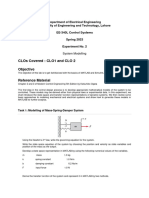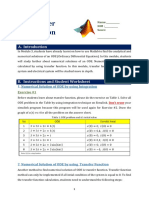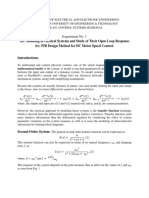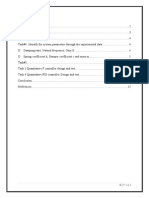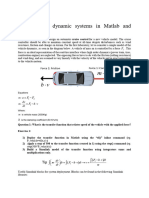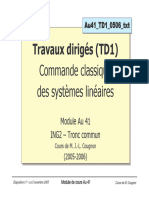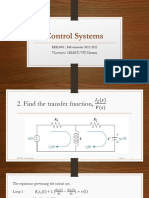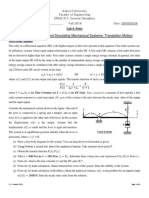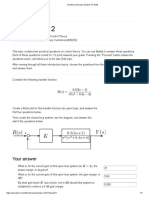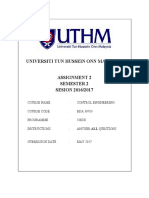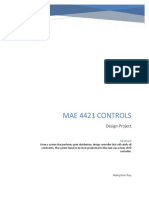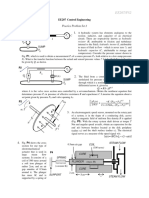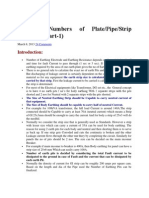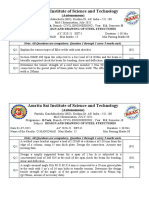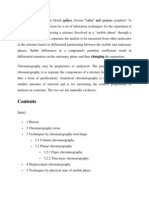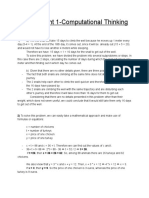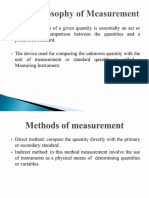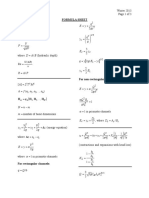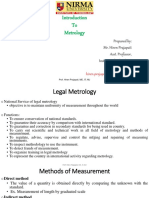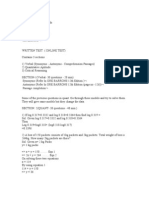0% found this document useful (1 vote)
94 views2 pagesProblems 01
1. The document provides exercises related to dynamical systems and control from sources including a solved problems book and an aerospace engineering exam.
2. The exercises involve modeling a mechanical system with mass, damper and spring components, obtaining the transfer function and block diagram of the system. Additional exercises involve finding parameter values to achieve a specified response, plotting a Bode diagram, and modeling and analyzing the response of an aircraft to control input.
3. Suggested additional exercises involve mechanical, liquid level, thermal, electrical and wave energy converter systems as well as time response analysis and Bode diagrams.
Uploaded by
Francisco MachadoCopyright
© © All Rights Reserved
We take content rights seriously. If you suspect this is your content, claim it here.
Available Formats
Download as PDF, TXT or read online on Scribd
0% found this document useful (1 vote)
94 views2 pagesProblems 01
1. The document provides exercises related to dynamical systems and control from sources including a solved problems book and an aerospace engineering exam.
2. The exercises involve modeling a mechanical system with mass, damper and spring components, obtaining the transfer function and block diagram of the system. Additional exercises involve finding parameter values to achieve a specified response, plotting a Bode diagram, and modeling and analyzing the response of an aircraft to control input.
3. Suggested additional exercises involve mechanical, liquid level, thermal, electrical and wave energy converter systems as well as time response analysis and Bode diagrams.
Uploaded by
Francisco MachadoCopyright
© © All Rights Reserved
We take content rights seriously. If you suspect this is your content, claim it here.
Available Formats
Download as PDF, TXT or read online on Scribd
/ 2
